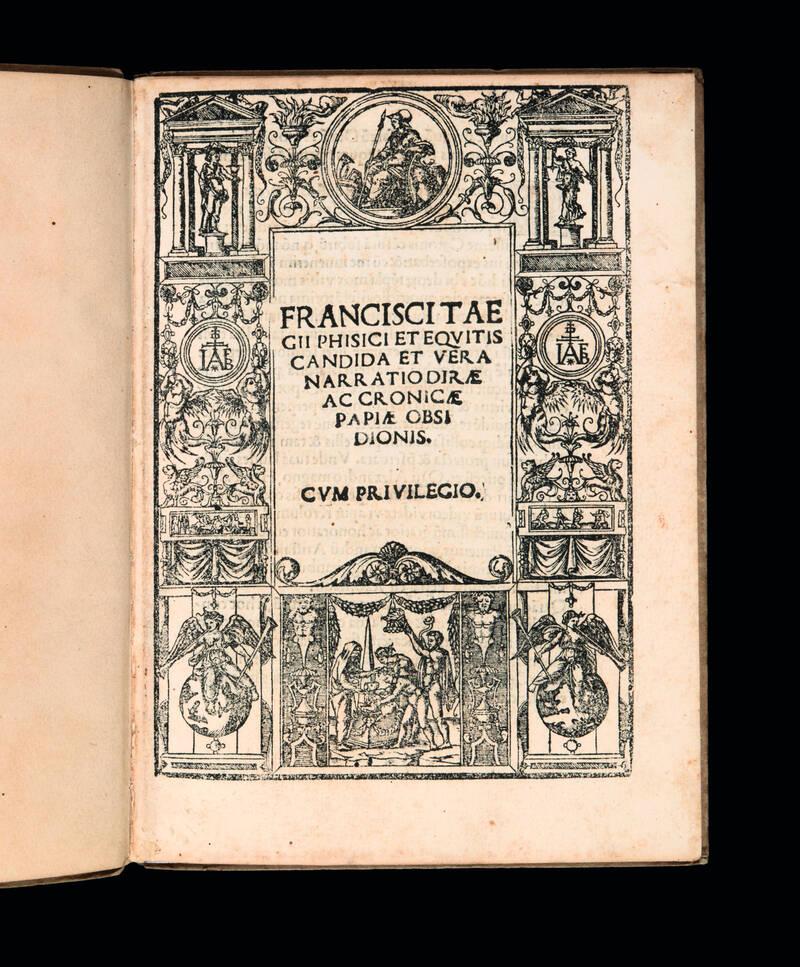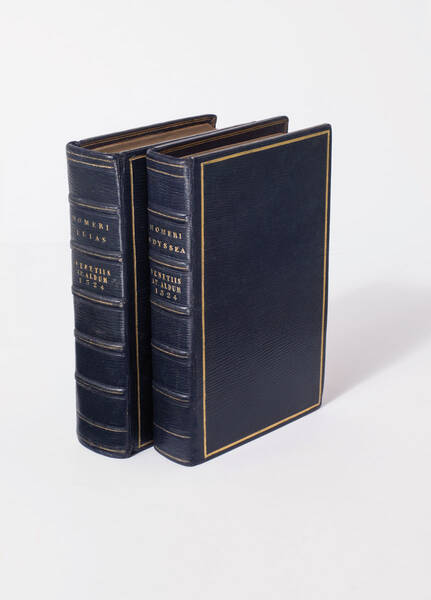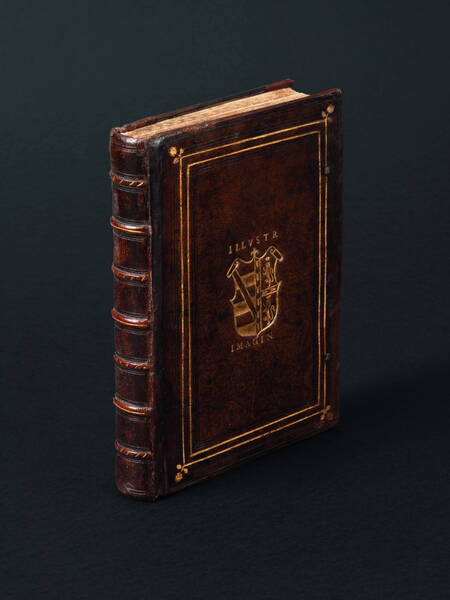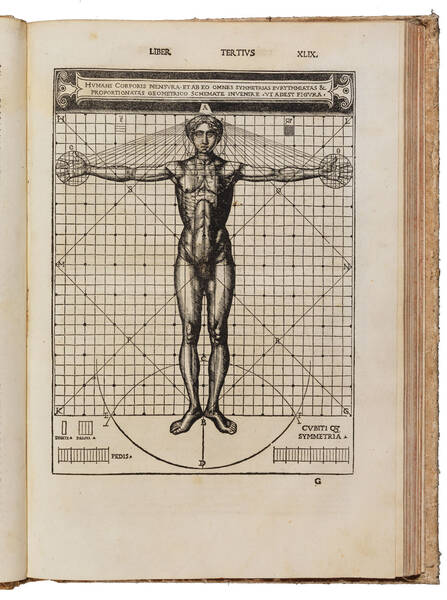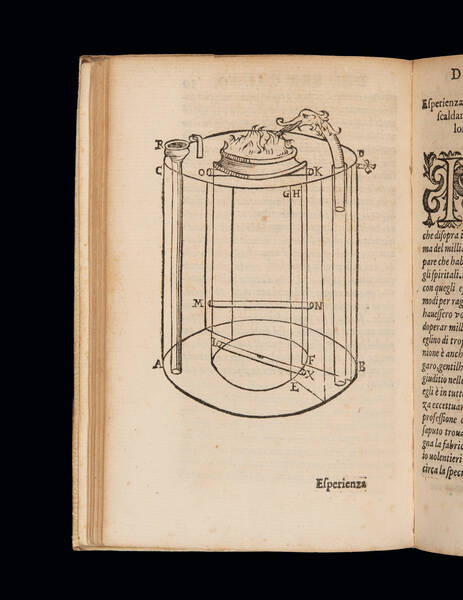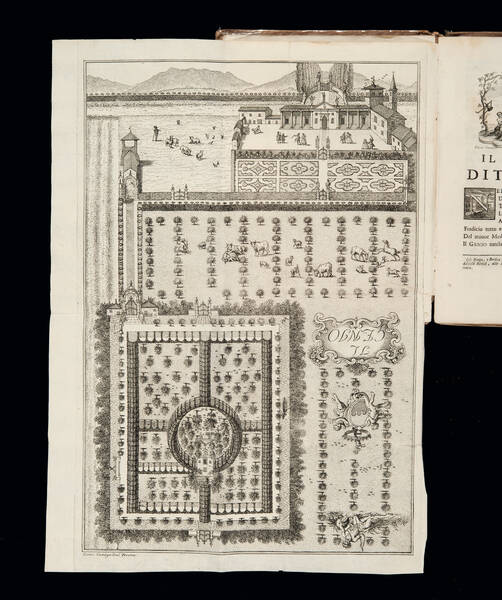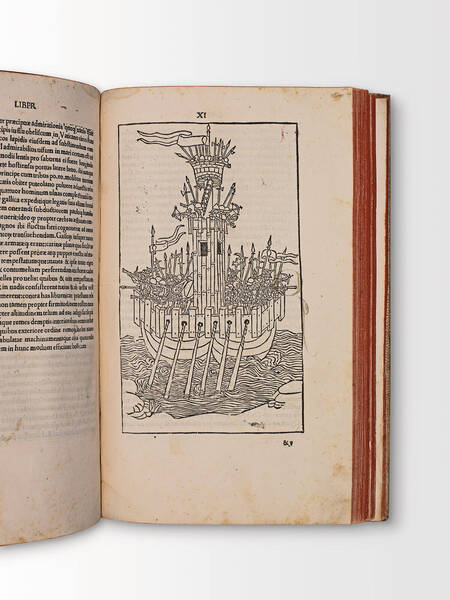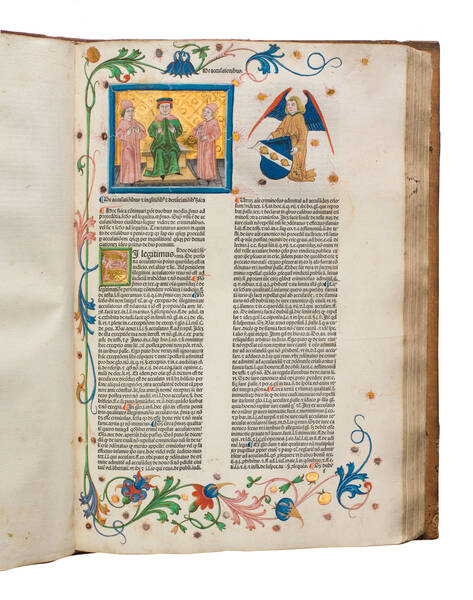TAEGIO, Francesco. Frencisci Taegii phisici et equitis Candida et vera narratio dirae ac cronicae Papiae obsidionis.
Pavia, cussa apud Iacob de Burgofranco., 1525 die XIII Aprilis.Quarto (210 x 146 mm.) [22] leaves; title-page with an elaborate woodcut border, illustrated with a vignette of a sacrificial lamb, grotesque figures and the image of Minerva, goddess of victory, in a tondo, the printer's device of Jacob de Burgofranco is also included in the border; two historiated initials. A very fine copy in nineteenth-century paper boards with manuscript title on the front cover.
First edition of the chronicle of the siege of Pavia written by Francesco Taegio, which was followed by an Italian translation edited by Ottavio Ballada and printed in Pavia (1655), and a third edition published in Nuremberg (1736). The chronicle, dedicated to Antonio de Leyva, the commander of the imperial army besieged in Pavia, begins with the French invasion of the Duchy of Milan. After easily taking the capital, Francis I advanced toward Pavia, already weakened by famine and the plague off the previous summer. The siege began on October 28th, 1524, and concluded on February 24th, 1525, with the battle between the French besiegers and the imperial reinforcements led by Charles III Duke of Bourbon, who had marched from Lodi. The events in Pavia marked a decisive moment in the 16th century: the bloody imperial victory forced Francis I, now a prisoner of Charles V, to sign the renunciation of all claims to Italy and Burgundy. Meanwhile, the highly unfavorable conditions of the Treaty of Madrid led to a new phase in the Italian Wars, with the War of the League of Cognac and the subsequent Peace of Cambrai. Ultimately, Pavia came to symbolize the definitive assertion of Spanish and Habsburg power under Charles V in Europe.
The author, however, limits himself to outlining the events, following the chronology from the beginning of the siege to the end of the battle from the perspective of someone experiencing the events firsthand. He does not feel the need to frame the narrative with broader political or historical considerations, also due to the very short time passed between the events and the publication of the work. Taegio emphasizes this episodes highlighting the role played by the dedicatee, the Spanish captain de Leyva, in the victory against Francis I: these include de Leyva's decision to melt down his own gold to meet the payment demands of the Landsknechts and the speech in which he indignantly rejects the Spanish king's suggestion to surrender Pavia to the French to avoid its destruction. Also noteworthy is Taegio's attention to the use of arquebuses by both sides, reflecting their emerging importance as a key element in the composition of European armies.
Francesco Taegio was a physician, philosopher, and knight, from Novara. In 1520 he became professor of philosophy at the University of Pavia. In his posthumous autobiography, the mathematician Gerolamo Cardano (1501– 1576), recalled attending some of Taegio's lectures.
Taegio's chronicle is the last book printed in Pavia until 1539: the battle of 1525, along with a series of subsequent sackings, led to a prolonged interruption of all printing activities in the city, which did not fully resume until the 1560s. Jacopo da Burgofranco himself, who was a university custodian, bookseller, and printer-publisher specializing in academic works, left Pavia for Venice, where he worked from 1528 until his death in 1538. USTC records only two copies in institutions outside of Italy (BL and Bibliothèque Mazarine), although are records of a copy in the collections of the Bayerische Staatsbibliothek in Munich.
EDIT16 CNCE 56073; USTC 857920; BMSTC Italian 654; Brunet V 642 cites another edition of the same work under a different title, printed in the same year, as well as a Koln edition under this title. Argelati, I, pp. 1475-6; BNO I 1525; G. Tinazzo, Il tipografo-editore Iacopo Pocatela (Pavia 1490-Venezia 1538), in Atti e memorie dell'Accademia Patavina di scienze, lettere ed arti 70 (1957-1958); UNPAV p. 169.
Other Books
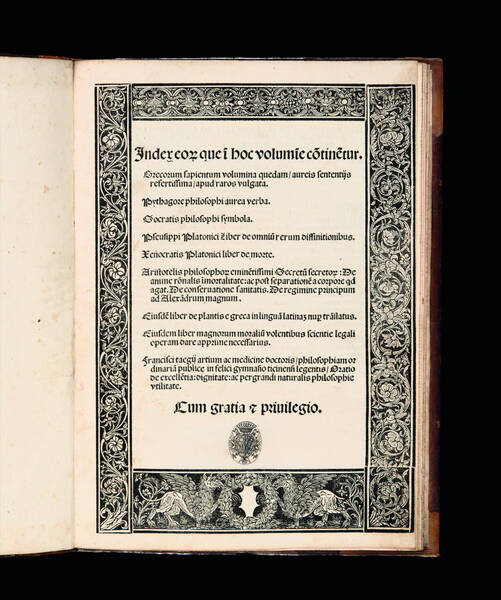
TAEGIO, Francesco
Grecorum sapientum volumina quedam aureis sententijs refertissima apud raros vulgata. Pythagore Aurea verba. Socratis Symbola. Pseusippi Platonici...
€ 12.000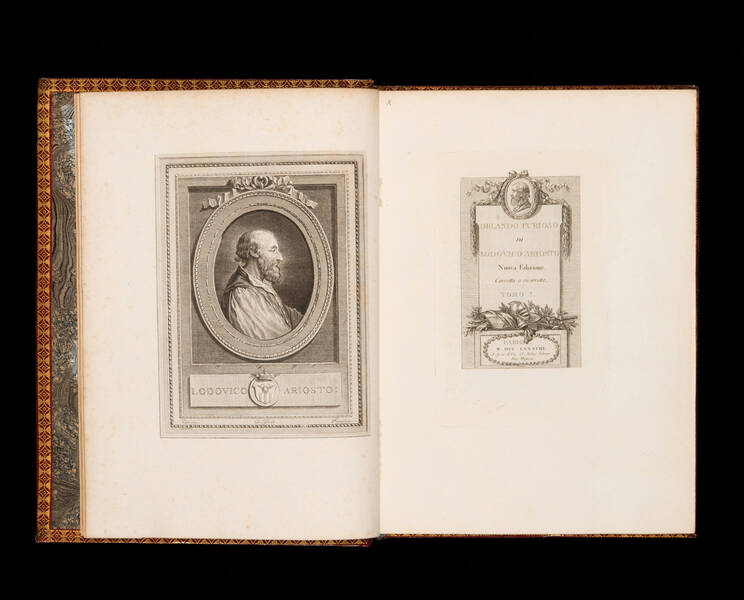
ARIOSTO, Ludovico
Orlando furioso di Ludovico Ariosto. Nuova Edizione Corretta e ricorretta.
€ 6.000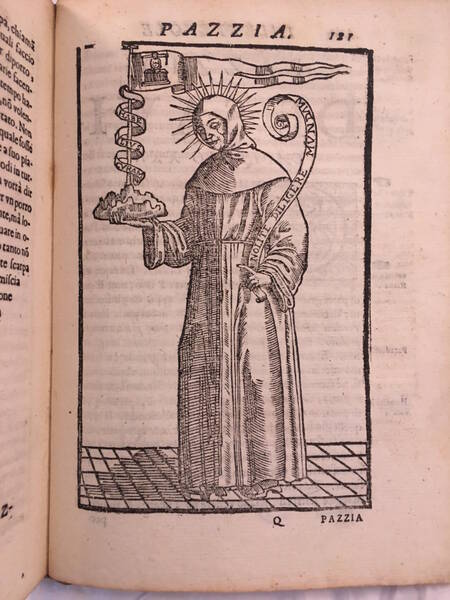
SPELTA, Antonio Maria
La saggia pazzia, fonte d’allegrezza, madre de’ piaceri, regina de’ belli humori.
€ 2.000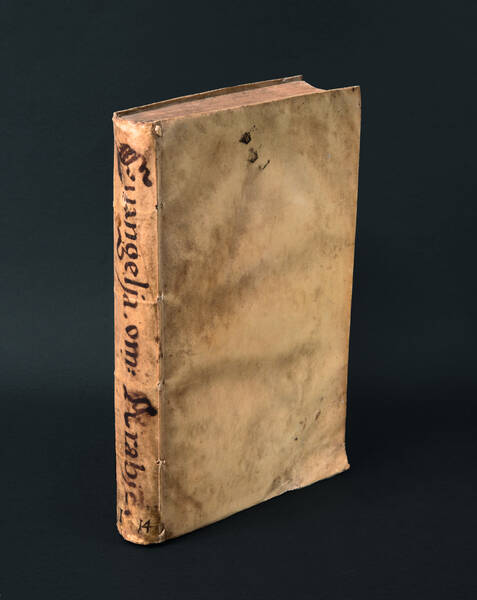
[BIBLIA ARABICA]
Evangelium Iesu Christi quemadmodum scripsit Mar Mattheus unus ex duodecim discipulis eius.
€ 11.000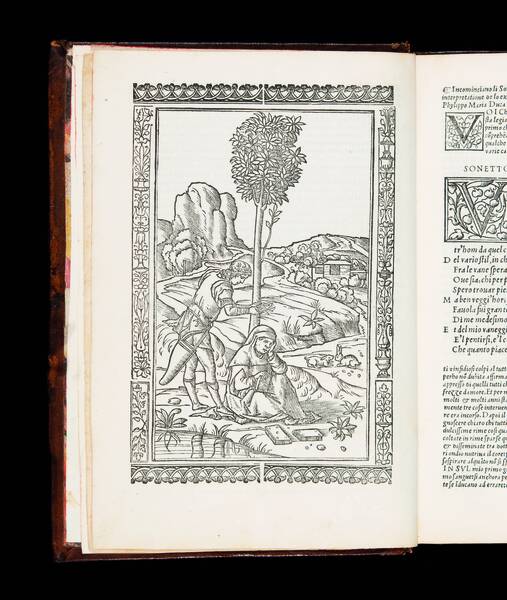
PETRARCA, Francesco
Li Sonetti canzone e triumphi del Petrarcha con li soi commenti non senza grandissima euigilantia et summa diligentia correpti et in la loro primaria...
SOLD OUT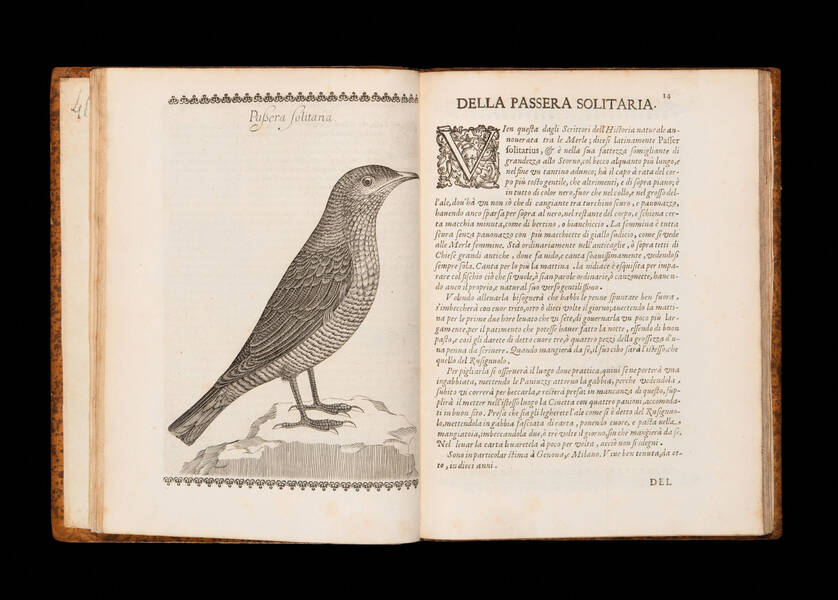
OLINA, Giovanni Pietro
Vccelliera ouero discorso della natura, e proprieta di diuersi vccelli, e in particolare di que' che cantano. Con il modo di prendergli, conoscergli,...
€ 6.000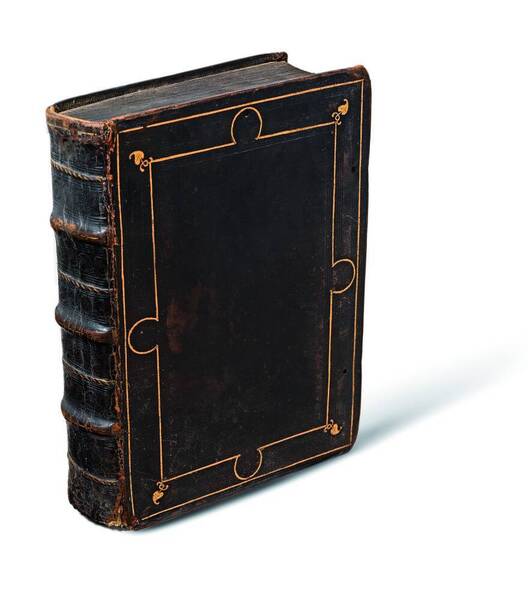
PLINIUS
Historia naturale di C. Plinio Secondo di latino in volgare tradotta per Christophoro Landino, nuouamente in molti luoghi, doue quella mancaua,...
SOLD OUT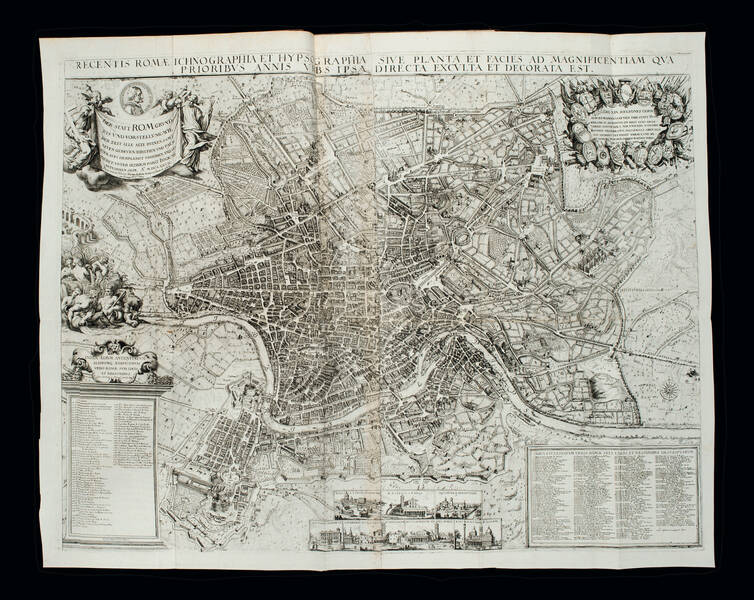
SANDRART, Joachim von
Romae antiquæ et novæ theatrum; sive, genuina ac vera urbis, juxta varios ejusdem status, delineatio topographica.
SOLD OUT![Azhār al-afkār fī ğawāhir al-ahğār by Ahmad ibn Yūsuf al-Tīfāšī […]Fior di pensieri sulle pietre preziose di Ahmed Teifascite, opera stampata nel suooriginale arabo, colla traduzione italiana appresso, e diverse note di AntonioRaineri Azhār al-afkār fī ğawāhir al-ahğār by Ahmad ibn Yūsuf al-Tīfāšī […]Fior di pensieri sulle pietre preziose di Ahmed Teifascite, opera stampata nel suooriginale arabo, colla traduzione italiana appresso, e diverse note di AntonioRaineri](https://www.medariquier.com/typo3temp/pics/4baf8d2ef4.jpg)
AHAMAD IBN YUSUF, al-Tayfãsî
Azhār al-afkār fī ğawāhir al-ahğār by Ahmad ibn Yūsuf al-Tīfāšī […] Fior di pensieri sulle pietre preziose di Ahmed Teifascite, opera stampata nel...
SOLD OUT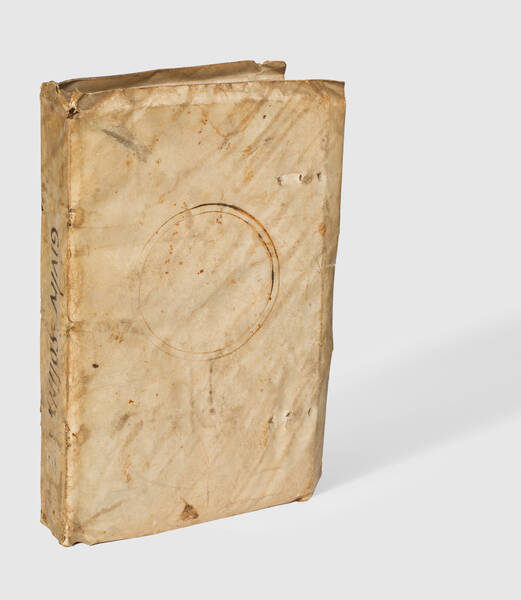
POMPONIUS MELA, IULIUS SOLINUS
Itinerarium Antonini Aug. Vibius Sequester. P. Victor de regionibus urbis Romae. Dionysius Afer de Situ orbis Prisciano interprete
SOLD OUT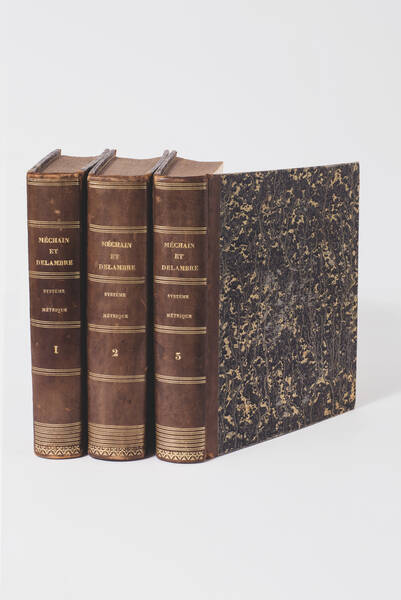
DELAMBRE, Jean-Baptiste-Joseph & MÉCHAIN, Pierre-François-André
Base du système métrique décimal, ou mesure de l'arc du méridien compris entre les parallèles de Dunkerque et Barcelone, exécutée en 1792 et années...
SOLD OUTMEDA RIQUIER rare books ltd.
4 Bury Street St James's
SW1Y 6AB London
Phone +44 (0) 7770457377
info@medariquier.com
